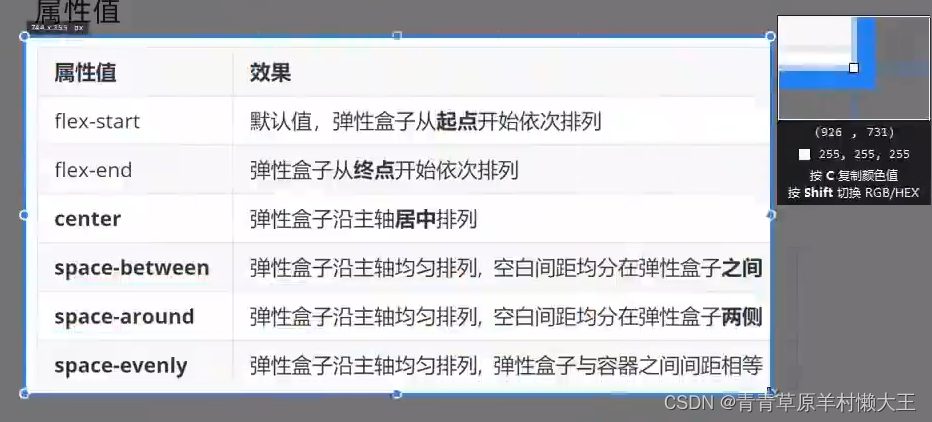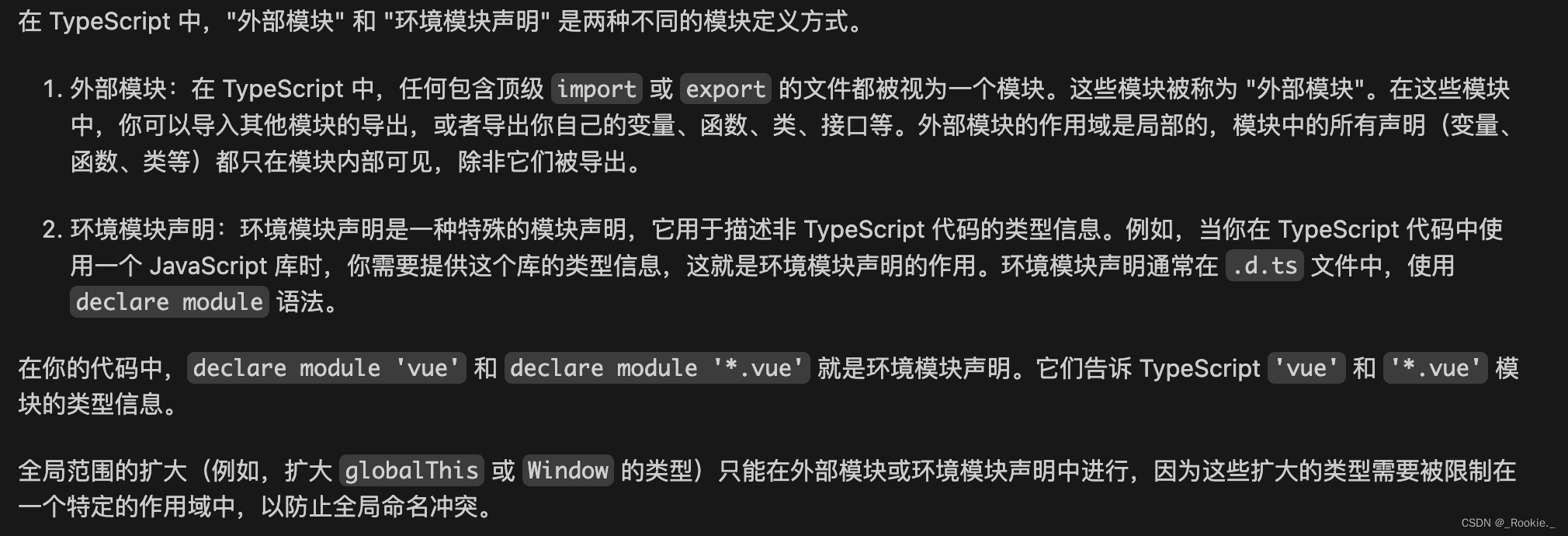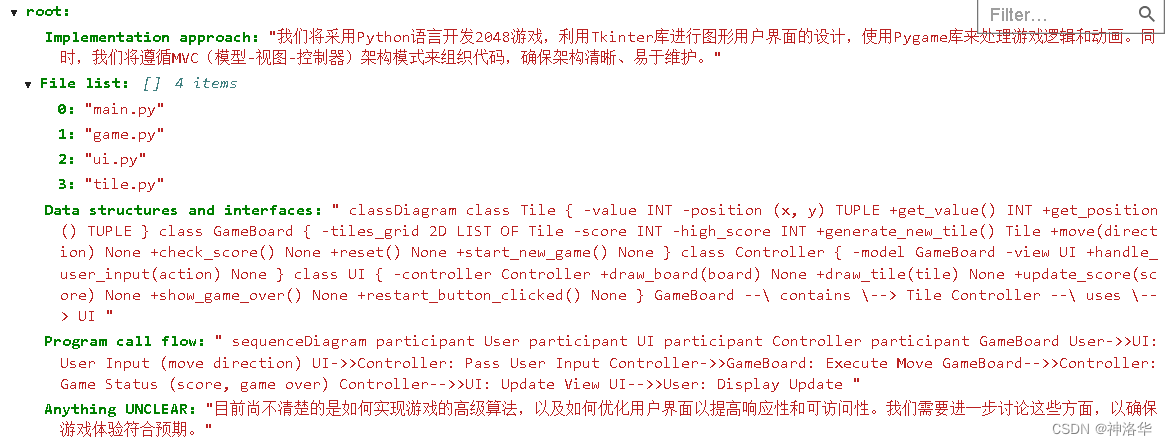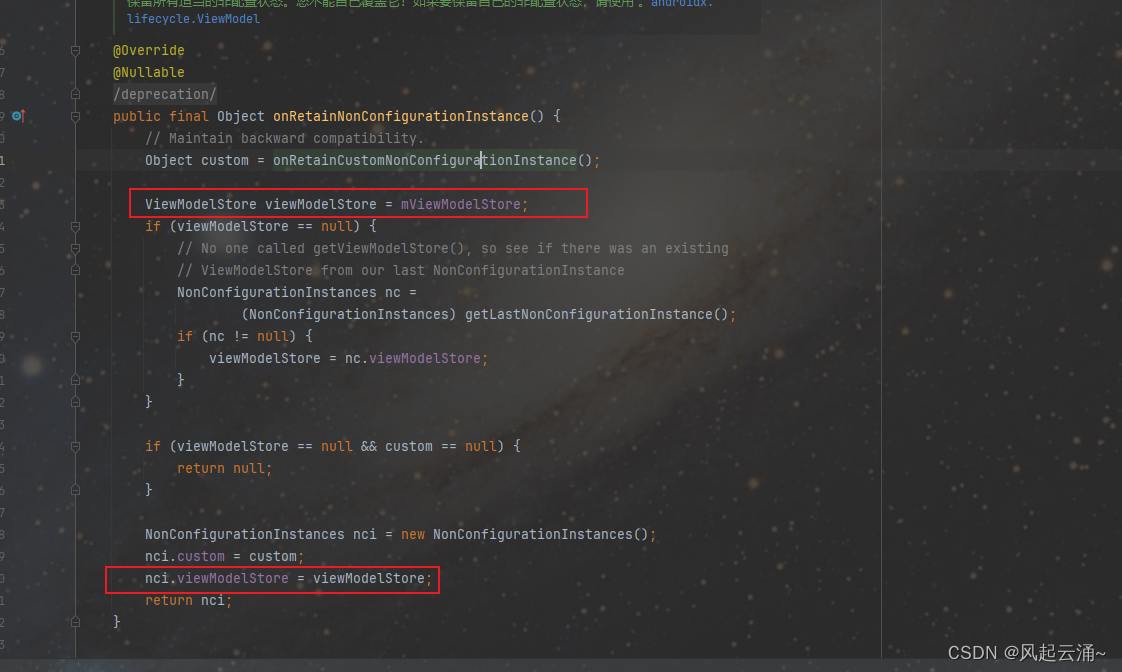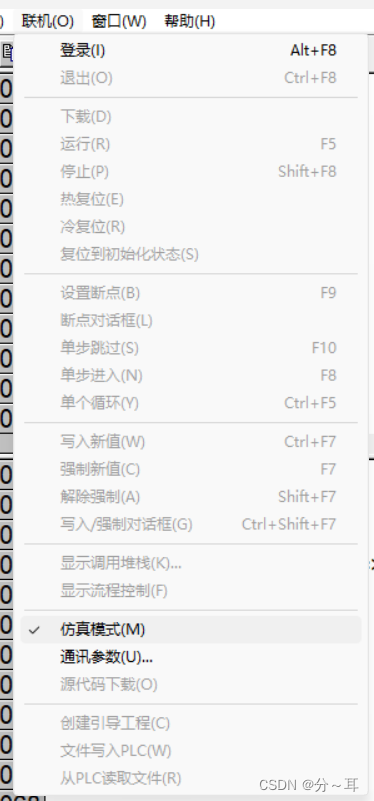1、C++概述
1 两大编程思想
c++语言在c语言的基础上添加了面向对象编程和泛型编程的支持。c++继承了c语言高效,简洁,快速和可移植的传统。
2 起源
与c语言一样,c++也是在贝尔实验室诞生的,Bjarne Stroustrup(本贾尼·斯特劳斯特卢普)在20世纪80年代开发了这种语言。
3 移植性和标准
- ANSI 在1998制定出C第一套标准
- 2003年,发布了c++标准第二版(IOS/IEC 14882:2003),该版本对第一版修订了一些错误,但并没有改变语言特性,因此c++98表示c++98/c++2003
- c++不断发展。IOS标准委员会于2011年8月批准了新标准ISO/IEC 14882:2011,该标准被称为c++11,与c++98一样c++11也新增了许多特性。也是非常常见的一个版本
- 在C++11基础上又出现了C++14和C++17
2、C++初识
#include <iostream> //标准输入输出流 i - input 输入 o - output 输出 stream 流 相当于 stdio.h
using namespace std; //使用 标准 命名空间
//程序入口函数
int main()
{
// cout 标准输出流对象
// << 左移 在C++下有了新的寓意 用于在cout后拼接输出的内容
// endl --- end line 刷新缓冲区 并且换行
cout << "hello world" << endl;
system("pause"); //阻塞
return EXIT_SUCCESS; //返回正常退出
}
- 引入头文件 #include 标准输入输出流
- 使用标准命名空间 using namespace std;
- 标准输出流对象 cout << "hello world" << endl;
- 面向对象三大特性:封装、继承、多态
问题1:c++头文件为什么没有.h ?
在c语言中头文件使用扩展名.h,将其作为一种通过名称标识文件类型的简单方式。但是c++的用法改变了,c++头文件没有扩展名。但是有些c语言的头文件被转换为c++的头文件,这些文件被重新命名,丢掉了扩展名.h(使之成为c++风格头文件),并在文件名称前面加上前缀c(表明来自c语言)。例如c++版本的math.h为cmath.
| 头文件类型 | 约定 | 示例 | 说明 |
| c++旧式风格 | 以.h结尾 | iostream.h | c++程序可用 |
| c旧式风格 | 以.h结尾 | math.h | c/c++程序可用 |
| c++新式风格 | 无扩展名 | iostream | c++程序可用,使用namespace std |
| 转换后的c | 加上前缀c,无扩展名 | cmath | c++程序可用,可使用非c特性,如namespace std |
问题2:using namespace std 是什么 ?
namespace是指标识符的各种可见范围。命名空间用关键字namespace 来定义。命名空间是C++的一种机制,用来把单个标识符下的大量有逻辑联系的程序实体组合到一起。此标识符作为此组群的名字。
问题3:cout 、endl 是什么 ?
cout是c++中的标准输出流,endl是输出换行并刷新缓冲区。
3、C++对C的扩展
1 双冒号::作用域运算符
:: 代表作用域 ,如果前面什么都不添加 代表全局作用域
#define _CRT_SECURE_NO_WARNINGS
#include<iostream>
//using namespace std;
int atk = 1000;
void test01()
{
int atk = 2000;
std::cout << "atk = " << atk << std::endl;
// ::代表作用域 如果前面什么都不添加 代表全局作用域
std::cout << "全局 atk = " << ::atk << std::endl;
}
int main() {
test01();
system("pause");
return EXIT_SUCCESS;
}
2 namespace命名空间
准备函数:
game1.h
#pragma once
#include <iostream>
using namespace std;
namespace KingGlory
{
void goAtk();
}
game2.h
#pragma once
#include <iostream>
using namespace std;
namespace LOL
{
void goAtk();
}
game1.cpp
#include "game1.h"
void KingGlory::goAtk()
{
cout << "王者荣耀攻击实现" << endl;
}
game2.cpp
#include "game2.h"
void LOL::goAtk()
{
cout << "LOL攻击实现" << endl;
}
命名空间用途:解决名称冲突
#define _CRT_SECURE_NO_WARNINGS
#include<iostream>
using namespace std;
#include "game1.h"
#include "game2.h"
//1、命名空间用途: 解决名称冲突
void test01()
{
KingGlory::goAtk();
LOL::goAtk();
}
int main() {
test01();
system("pause");
return EXIT_SUCCESS;
}

命名空间下可以存放 : 变量、函数、结构体、类…
//2、命名空间下 可以放 变量、函数、结构体、类...
namespace A
{
int m_A;
void func();
struct Person
{};
class Animal
{};
}
命名空间必须要声明在全局作用域

命名空间可以嵌套命名空
//4、命名空间可以嵌套命名空间
namespace B
{
int m_A = 10;
namespace C
{
int m_A = 20;
}
}
void test03()
{
cout << "B空间下的m_A = " << B::m_A << endl;
cout << "C空间下的m_A = " << B::C::m_A << endl;
}

命名空间是开放的,可以随时将新成员添加到命名空间下
namespace B
{
int m_A = 10;
}
namespace B
{
int m_B = 100;
}
void test04()
{
cout << "B空间下的m_A = " << B::m_A << endl;
cout << "B空间下的m_B = " << B::m_B << endl;
}

命名空间可以匿名的
//6、命名空间可以是匿名的
namespace
{
int m_C = 1000;
int m_D = 2000;
//当写的命名空间的匿名的,相当于写了 static int m_C = 1000; static int m_D = 2000;
}
void test05()
{
cout << "m_C = " << m_C << endl;
cout << "m_D = " << ::m_D << endl;
}
命名空间可以起别名
//7、命名空间可以起别名
namespace veryLongName
{
int m_E = 10000;
void func()
{
cout << "aaa" << endl;
}
}
void test06()
{
namespace veryShortName = veryLongName;
cout << veryShortName::m_E << endl;
cout << veryLongName::m_E << endl;
}
3 using声明以及using编译指令
using声明
- using KingGlory::sunwukongId
- 当using声明与 就近原则同时出现,出错,尽量避免
#define _CRT_SECURE_NO_WARNINGS
#include<iostream>
using namespace std;
namespace KingGlory
{
int sunwukongId = 1;
}
void test01()
{
int sunwukongId = 2;
//1、using声明
//using KingGlory::sunwukongId ; //当using声明与 就近原则同时出现,出错,尽量避免
cout << sunwukongId << endl;
}
![]()
using编译指令
- using namespace KingGlory;
- 当using编译指令 与 就近原则同时出现,优先使用就近
- 当using编译指令有多个,需要加作用域 区分
namespace KingGlory
{
int sunwukongId = 1;
}
namespace LOL
{
int sunwukongId = 3;
}
void test02()
{
//int sunwukongId = 2;
//2、using编译指令
using namespace KingGlory;
using namespace LOL;
//当using编译指令 与 就近原则同时出现,优先使用就近
//当using编译指令有多个,需要加作用域 区分
cout << KingGlory::sunwukongId << endl;
cout << LOL::sunwukongId << endl;
}

注意:使用using声明或using编译指令会增加命名冲突的可能性。也就是说,如果有名称空间,并在代码中使用作用域解析运算符,则不会出现二义性。
4 检测增强
函数检测增强
- 函数的返回值
- 形参类型
- 函数调用参数个数
类型转换检测增强
char p = (char )malloc(64) C下等号必须左右一致类型
//3、类型转换检测增强
void test02()
{
char* p = malloc(64);
}
以上c代码c编译器编译可通过,c++编译器无法编译通过。
struct 增强
- C++可以在结构体中放函数
- 创建结构体变量可以简化关键字struct
//1. 结构体中即可以定义成员变量,也可以定义成员函数;;
struct Student {
string mName;
int mAge;
void setName(string name) { mName = name; }
void setAge(int age) { mAge = age; }
void showStudent() {
cout << "Name:" << mName << " Age:" << mAge << endl;
}
};
//2. c++中定义结构体变量不需要加struct关键字
void test01() {
Student student;
student.setName("John");
student.setAge(20);
student.showStudent();
}
bool数据类型扩展
C++才有bool类型,代表真 --- 1 true 假 ---- 0 false。sizeof = 1
//5、bool类型扩展 C语言下 没有这个类型 C++有bool类型
bool flag = true; // bool类型 代表 真和假 true ---- 真(1) false ---- 假(0)
void test04()
{
cout << sizeof(bool) << endl; //结果是1个字节
//flag = false;
//flag = 100; //将非0的数都转为1
cout << flag << endl;
}
// 结果
1
1
三目运算符增强
//6、三目运算符增强
void test05()
{
//?:
int a = 10;
int b = 20;
printf("ret = %d\n", a > b ? a : b);
(a < b ? a : b) = 100; // C++下返回的是变量 a = 100
printf("a = %d\n", a);
printf("b = %d\n", b);
}
//结果
ret = 20
a = 100
b = 20
5 const
const增强
C语言下
- 全局const 直接修改 失败 间接修改 语法通过,运行失败
- 局部 const 直接修改 失败 间接修改 成功
const int constA = 10;
int* p = (int*)&constA;
*p = 300;
printf("constA:%d\n",constA);
printf("*p:%d\n", *p);
//结果
constA:300
*p:300
C++语言下
- 全局 const 和C结论一样
- 局部 const 直接修改失败 间接修改 失败
- const可以称为常量,可以用于数组内的常数。
void test05()
{
const int constA = 10;
int* p = (int*)&constA;
*p = 300;
cout << "constA:" << constA << endl;
cout << "*p:" << *p << endl;
}
//结果
constA:10
*p:300
constA在符号表中,当我们对constA取地址,这个时候为constA分配了新的空间,*p操作的是分配的空间,而constA是从符号表获得的值。
对于基础数据类型,如果用一个变量初始化const变量,如果const int a = b,那么也是会给a分配内存。
void test06()
{
int b = 10;
const int constA = b;
int* p = (int*)&constA;
*p = 300;
cout << "constA:" << constA << endl;
cout << "*p:" << *p << endl;
}
//结果
constA:300
*p:300
const 链接属性
1)C语言下const修饰的全局变量默认是外部链接属性
同一个目录下两个文件:
const int g_a = 1000;
#define _CRT_SECURE_NO_WARNINGS
#include<stdio.h>
#include<string.h>
#include<stdlib.h>
int main() {
extern const int g_a;
printf("g_a = %d\n", g_a);
system("pause");
return EXIT_SUCCESS;
}
可以正常输出。
2)C++下const修饰的全局变量默认是内部链接属性
可以加extern 提高作用域
extern const int g_b = 1000;//默认是内部链接属性 可以加关键字 extern 提高作用域
#define _CRT_SECURE_NO_WARNINGS
#include<iostream>
using namespace std;
int main(){
extern const int g_b;
cout << "g_b = " << g_b << endl;;
system("pause");
return EXIT_SUCCESS;
}
const分配内存情况
- 对const变量 取地址 ,会分配临时内存
- 使用普通变量 初始化 const变量(const增强中已经举例)
- 对于自定义数据类型
//3、对于自定义数据类型
struct Person
{
string m_Name;
int m_Age;
};
void test03()
{
const Person p;
//p.m_Age = 10;
Person* pp = (Person*)&p;
(*pp).m_Name = "Tom";
pp->m_Age = 10;
cout << "姓名: " << p.m_Name << " 年龄: " << p.m_Age << endl;
}
尽量用const代替define
define出的宏常量,没有数据类型、不重视作用域
const和#define区别总结:
- const有类型,可进行编译器类型安全检查。#define无类型,不可进行类型检查
- const有作用域,而#define不重视作用域
6 引用
1)简介
- 目的:起别名
- 语法: 类型(与原名类型必须一致) &别名 = 原名
- 引用必须要初始化,引用一旦初始化后,就不可以引向其他变量
void test02()
{
int a = 10;
//int &b; //引用必须要初始化
int& b = a; //引用一旦初始化后,就不可以引向其他变量
int c = 100;
b = c; // 赋值
cout << "a = " << a << endl;
cout << "b = " << b << endl;
cout << "c = " << c << endl;
}
//结果
a = 100
b = 100
c = 100
2)建立对数组引用
①直接建立引用
int arr[10];
int(&pArr)[10] = arr;
②先定义出数组类型,再通过类型 定义引用
typedef int(ARRAY_TYPE)[10];
ARRAY_TYPE & pArr2 = arr;
//对数组建立引用
void test03()
{
//1、直接建立引用
int arr[3];
int(&pArr)[3] = arr;
for (int i = 0; i < 3; i++)
{
arr[i] = 100 + i;
}
for (int i = 0; i < 3; i++)
{
cout << pArr[i] << endl;
}
printf("\n --------2------\n");
//2、先定义出数组类型,再通过类型 定义引用
typedef int(ARRAY_TYPE)[3];
//类型 &别名 = 原名
ARRAY_TYPE& pArr2 = arr;
for (int i = 0; i < 3; i++)
{
cout << pArr2[i] << endl;
}
}
3)参数的传递方式
- 值传递
- 地址传递
- 引用传递
//1、值传递
void mySwap01(int a, int b)
{
int temp = a;
a = b;
b = temp;
cout << ":::b = " << b << endl;*/
}
//2、地址传递
void mySwap02(int* a, int* b)
{
int temp = *a;
*a = *b;
*b = temp;
}
//3、引用传递
void mySwap03(int& a, int& b) // int &a = a; int &b = b;
{
int temp = a;
a = b;
b = temp;
}
void test01()
{
int a = 10;
int b = 20;
//mySwap01(a, b);
//mySwap02(&a, &b);
mySwap03(a, b);
cout << "a = " << a << endl;
cout << "b = " << b << endl;
}
第一种其实没有实现交换功能。通过引用参数产生的效果同按地址传递是一样的。引用的语法更清楚简单:
- 函数调用时传递的实参不必加“&”符
- 在被调函数中不必在参数前加“*”符
引用作为其它变量的别名而存在,因此在一些场合可以代替指针。C++主张用引用传递取代地址传递的方式,因为引用语法容易且不易出错。
4)注意事项
- 引用必须引一块合法内存空间
- 不要返回局部变量的引用
int& func()
{
int a = 10;
return a;
}
//引用注意事项
void test02()
{
//int &a = 10; //1、引用必须引一块合法内存空间,这种就不能通过,因为后面必须是变量名。
//2、不要返回局部变量的引用
int& ref = func();
cout << "ref = " << ref << endl;
cout << "ref = " << ref << endl;
}

第一个能正常输出,是因为程序做了优化保留,实际这种做法是有潜在危险的。要想不取消,需要就加上static,看下一个例子。
- 当函数返回值是引用时候,那么函数的调用可以作为左值进行运算
int& func2()
{
static int a = 10;
return a;
}
void test03()
{
int& ref = func2();
cout << "ref = " << ref << endl;
cout << "ref = " << ref << endl;
cout << "ref = " << ref << endl;
cout << "ref = " << ref << endl;
//当函数返回值是引用,那么函数的调用可以作为左值
func2() = 1000;
cout << "ref = " << ref << endl;
}

5)引用的本质
引用的本质在c++内部实现是一个指针常量.
Type& ref = val; // Type* const ref = &val;
c++编译器在编译过程中使用常指针作为引用的内部实现,因此引用所占用的空间大小与指针相同,只是这个过程是编译器内部实现,用户不可见。
void testFunc(int& ref) {
ref = 100; // ref是引用,转换为*ref = 100
}
int main() {
int a = 10;
int& aRef = a; //自动转换为 int* const aRef = &a;这也能说明引用为什么必须初始化
aRef = 20; //内部发现aRef是引用,自动帮我们转换为: *aRef = 20;
cout << "a:" << a << endl;
cout << "aRef:" << aRef << endl;
testFunc(a);
cout << "a:" << a << endl;
cout << "aRef:" << aRef << endl;
return EXIT_SUCCESS;
}

6)指针的引用
- 利用引用可以简化指针
- 可以直接用同级指针的 引用 给同级指针分配空间
以下两个示例代码效果是一样的:
struct Person
{
int age;
};
void allocateSpace(Person** p)
{
//p指向指针的指针 *p 指针 指向的是person 本体 **p person本体
*p = (Person*)malloc(sizeof(Person));
(*p)->age = 10;
}
void test01()
{
Person* p = NULL;
allocateSpace(&p);
cout << "p.age = " << p->age << endl;
}
struct Person
{
int age;
};
void allocateSpace2(Person*& pp) // Person * &pp = p;
{
pp = (Person*)malloc(sizeof(Person));
pp->age = 20;
}
void test02()
{
Person* p = NULL;
allocateSpace2(p);
cout << "p.age = " << p->age << endl;
}
7)常量的引用
- 本质:const int &ref = 10; // 加了const之后, 本质 相当于写成 int temp = 10; const int &ref = temp;当然一般不这么用。
- 常量引用的使用场景:修饰函数中的形参,防止误操作
void test01()
{
//int &ref = 10; //这种是不合法的
const int& ref = 10; // 加了const之后, 相当于写成 int temp = 10; const int &ref = temp;
int* p = (int*)&ref;
*p = 10000;
cout << ref << endl; //可以被修改
}
//常量引用的使用场景 修饰函数中的形参,防止误操作
void showValue(const int& a)
{
//a = 100000;
cout << "a = " << a << endl;
}
void test02()
{
int a = 100;
showValue(a);
}
//结果
1000
a = 100


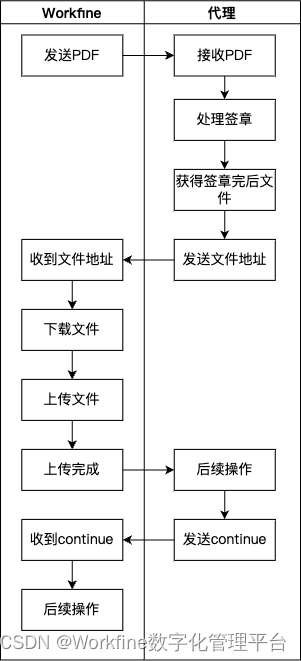


![[数据结构1.0]选择排序](https://img-blog.csdnimg.cn/direct/abd7dc81d5fb48d0b3f138c36b9a2ffa.png)

